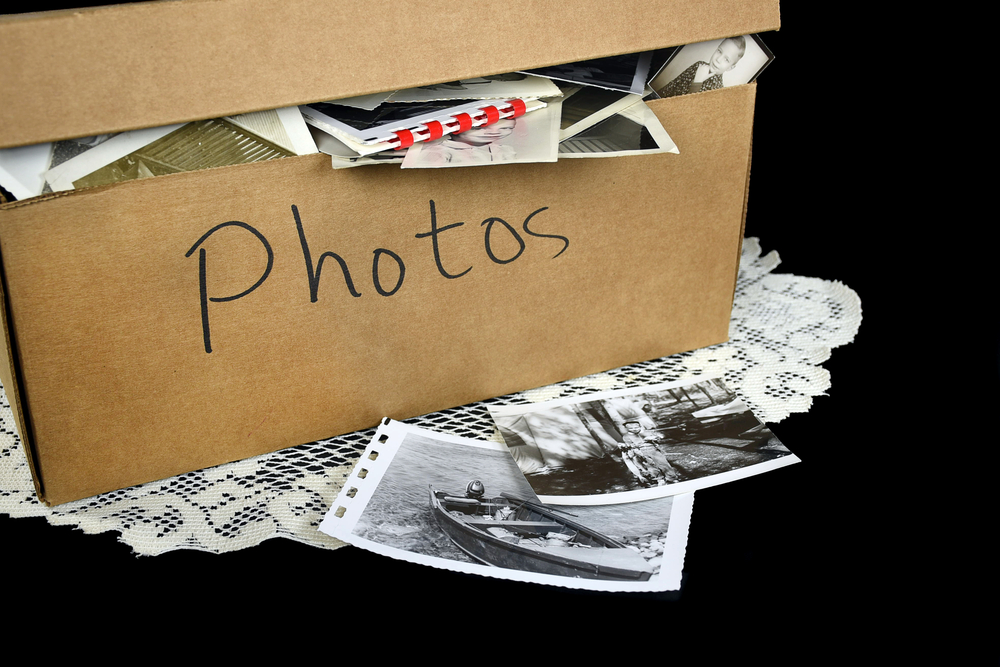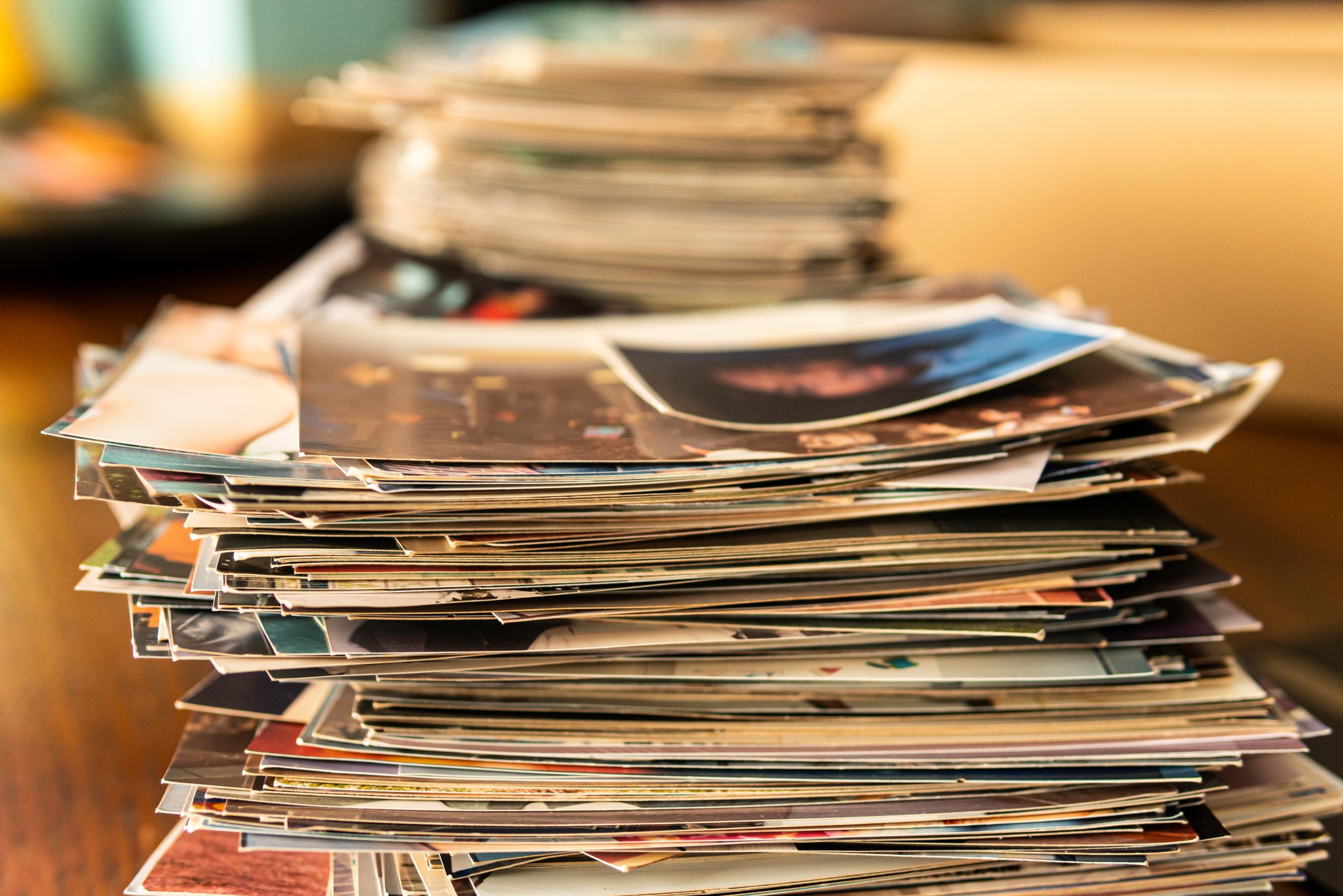Everyone has tons of photos, nowadays they are mostly in digital form. But, most of us also have a box or album full of Grandma’s precious photos, and even kid’s artwork from elementary school. These are snapshots of important moments in your life; and you need to ensure they last a lifetime, especially while in storage. These photos and works of art are ones that you can’t get back; there’s no digital copy on a computer somewhere. If you’re wondering how to organize and store old photos…
That’s where we come in! You can keep everything from your wedding album, Grandpa’s service photos, and Uncle Joe’s famous paintings in your storage unit. Follow these simple steps and your precious photos and artwork will be safe while you store them over long periods of time.
Digitize Your Old Photos & Artwork.
The first and most obvious step in how to organize and store old photos is to digitize them. It may take you some time upfront, but scanning all your old photos to preserve them is a great idea. Those old photos were printed on paper and using inks that don’t last forever. Over time, the temperature swings and with years of handling and moving around. They can break down and start to crumble. Make sure to save them before it’s too late.
If you don’t know how to get this done, take your photos and artwork to a professional. They have the best equipment to scan at high resolution for reproduction. They can also restore old photos to their original beauty if they have faded or been damaged over the years. But, do your research and ask for recommendations! You don’t want to give your box of memories to just anyone. Be sure they are insured and ask to see examples of their work and get references. The last thing you want is to hand over your precious photos to someone who will ruin or lose them.
Make Backups!
Sounds like common sense, but most people just don’t do this. Take the extra step now! If you have digital photos, be sure to save them in more than one location. It’s best to save them on disc, flash drive, or external hard drive in addition to your computer; or better yet all three! You can never have too many backups. And, the experts always say to have a backup of your backup – so take their advice to heart.

Prepare Albums & Other Memorabilia for Storage.
Okay, here’s how to organize and store old photos and artwork the physical copies. Be sure to consider how to properly pack your albums, scrapbooks, photos and any other memorabilia. These items should be standing on end or vertical. If you lay these flat and stack them on top of each other, the weight can damage them over time. Pages can fold and tear, photos can melt together, corners can bend and break off and paintings can stick together and damage the art. When standing them on end as they were designed, it allows them to distribute the weight evenly and keep airflow. This will prevent unwanted damage.
You also want to store all photos and sensitive artwork in acid-free archival storage boxes and with acid-free paper in between loose photos and artwork. These boxes are designed specifically to protect photos and similar items. These boxes can then be placed into a larger storage container such as a storage tote for added protection from any moisture or critters. It even makes them easier to get to because you can stack them up and gain access quickly.
Remember to organize and label your store of old photo albums and your boxes. Make it easy to access later when you want to grab all the old photos for the next family reunion. You should write the years covered in that album or box, and also list the event. For example, Grandma & Grandpa’s Wedding, December 20, 1950.
Determine Your Storage Type.
Another thing to consider is whether you need a temperature control storage unit or a traditional storage unit when it’s time to organize and store old photos. This is more of a personal decision, but there are differences to consider.
Air that is too stuffy or stale might encourage the growth of mold and other organic substances. Temperatures that are too hot or too cold can interfere with the chemicals used in the processing of photos, leading to discoloration and fading. A standard drive-up storage unit (or your attic or garage) is great for typical household goods, but may not be the best choice to preserve photos. These areas can get very hot during the dog days of summer and can get very cold during the winter because they are not heated or cooled at all.
A more controlled environment like a temperature control storage unit (or a spare room in your home) is better for sensitive items like photos and artwork. These storage units are kept between 55 and 80 degrees year-round (as is your home), where there are no major temperature swings or extreme humidity that can potentially cause damage.
The length of storage is also something to consider. If you are only storing during the winter or just a month or two, a standard storage unit (or your attic or garage) is a fine choice. If you are storing over the hot summer months or for more than six months, a temperature control unit (or a spare room in your home) is the best option.
Recap: How to Organize and Store Old Photos
Protecting your precious photos and artwork while in storage is actually pretty simple. If you follow these easy steps, your memories will last a lifetime! You can also talk to any of our friendly and knowledgeable property managers if you still have questions or you are unsure how to get started.
If you already followed our easy steps and you are ready to secure your storage unit, you can reserve a unit or rent a unit online 24/7 and get started now!
This article was originally published August 10th, 2015. We’ve updated on July 20th, 2021 for the best tips.

